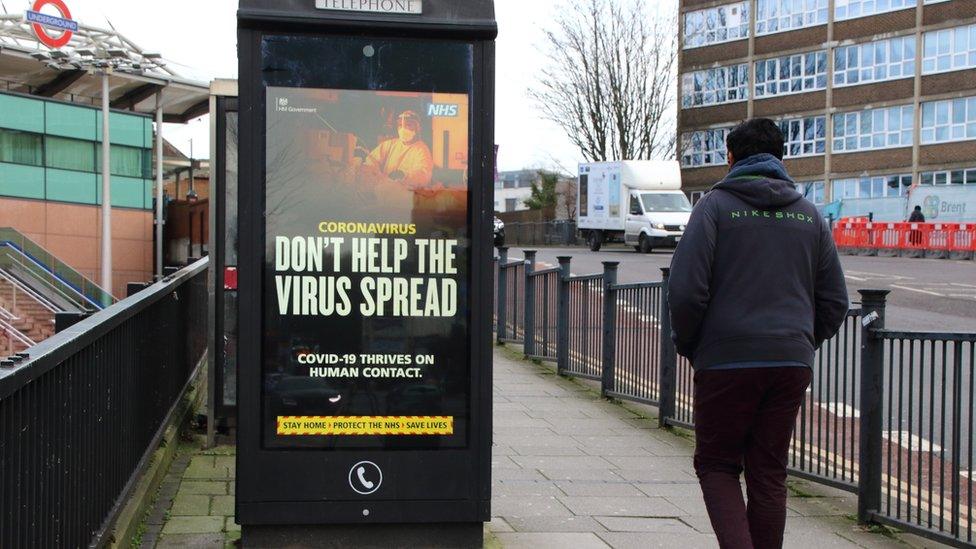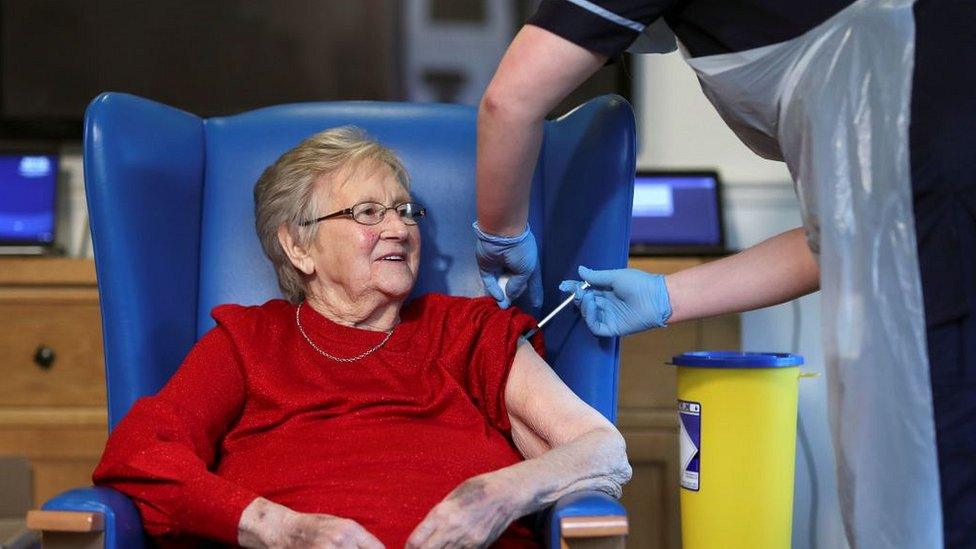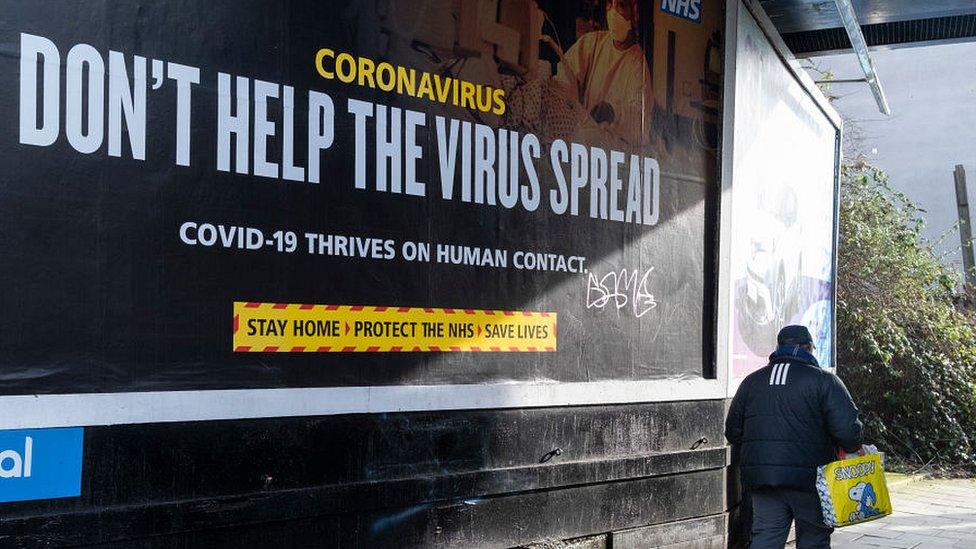Covid: React study finds virus decline slowing in England
- Published
- comments

A marked decline in infections between January and February may have slowed, according to scientists tracking coronavirus in England.
Infections fell by two-thirds over lockdown, but one in 200 people still have the virus.
Lower virus levels are needed to get the best out of the vaccination programme, Imperial College's React study says.
Schools are reopening on Monday in England in the first easing of rules.
Based on swab tests of a random sample of 165,000 people between 4 and 23 February, the study findings estimate that 0.5% of people in England had the virus - down from 1.57% in January.
The figures show "substantial falls" in household infections in all age groups and in most regions since early January, while lockdown restrictions have been in place.
It comes as official figures continue to show sharp falls in confirmed cases, hospital admissions and deaths linked to Covid-19 going back several weeks.
But the study found some evidence of smaller falls in infections in Yorkshire and the north-east, and apparent rises in London, the south-east and the Midlands - although this was based on only a few days' worth of data in February.
Although the researchers say it's too early to detect the effect of the vaccination programme on rates of infection in the study, they stress the need to keep infections low while Covid vaccines are being rolled out.
Prof Steven Riley, from Imperial College London, said this was so people "don't get infected before they get the vaccine".
More than 20 million people across the UK have now received a first dose, with a target to invite all over-50s by mid-April and people in their 40s and 30s after that.
To reach the mid-April target, another 12 million people still have to be vaccinated.
The researchers say their findings highlight the need for people to continue to follow social-distancing guidelines while the remainder of the population receive their jabs.
The React study also found some workers were more likely to be infected than others. They included healthcare workers, care home workers and those working in education, nursery or childcare.
Public transport workers had the highest risk, being more than twice as likely as other workers to be infected.
Those working at home were least likely to have the virus.
Among ethnic groups, the highest levels of infection in January and February were found in Bangladeshi people. There were also high infection rates among black, Indian and Pakistani people.


- Published3 March 2021

- Published2 March 2021
